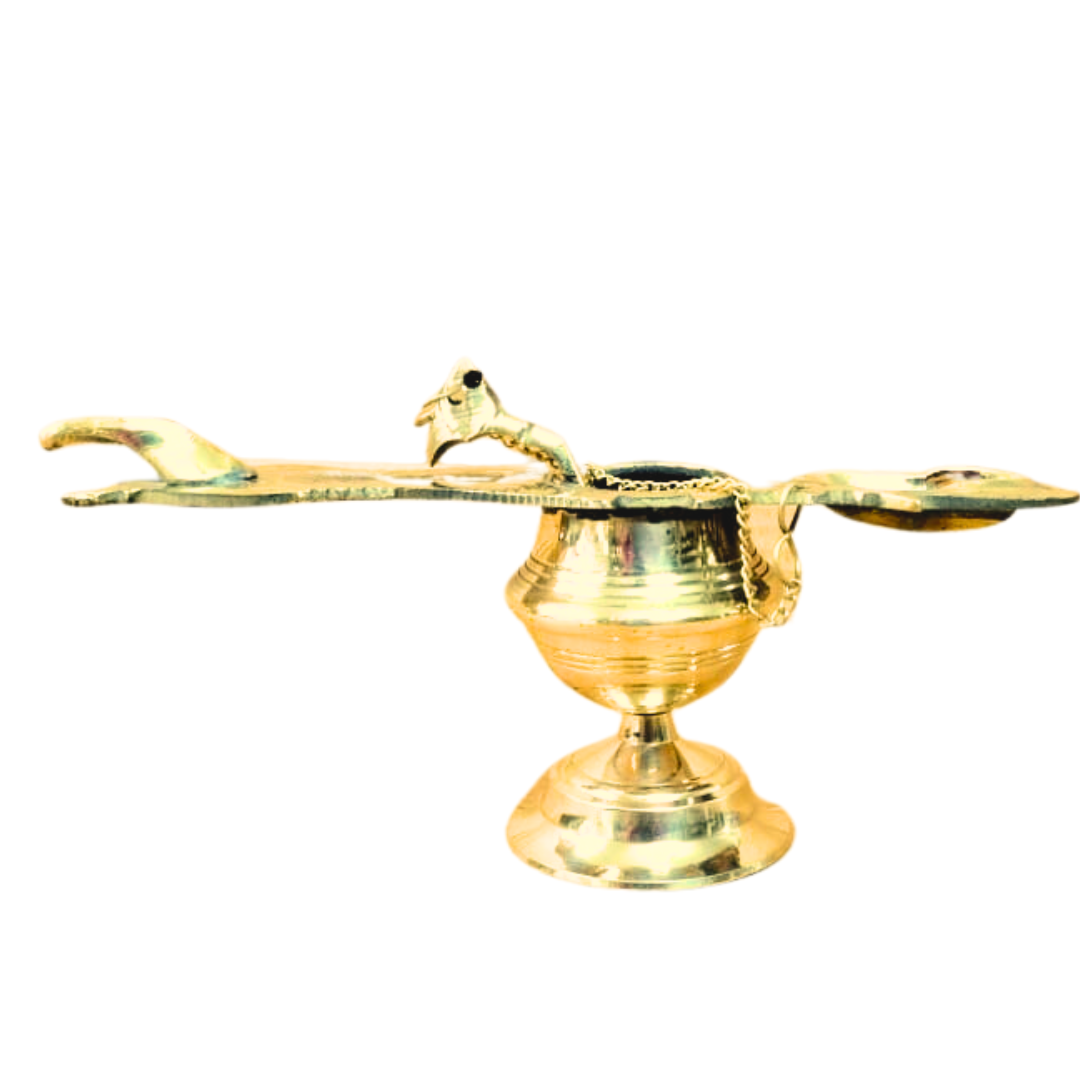Ashtamangalya Vilakku: This vilakku is also known as " Changalavatta". One of the most important lamps in the temples of Kerala. Among all other lamps, its shape is entirely different. It has a long leaf-shaped structure. On the tip of the lamp we lit the light, in the middle portion, there is a cavity to store oil along with a detachable spoon. Whenever the light requires oil, we can take it from that cavity. Ashtamangalya vilakku is widely used in temples, weddings, and housewarmings.
The Brass Ashtamangalya Vilakku is a traditional lamp or diya made of brass that is commonly used in South Indian households and temples. "Ashtamangalya" refers to the combination of eight auspicious symbols in Hinduism, and "vilakku" means lamp in the Tamil language.
The Brass Ashtamangalya Vilakku is usually filled with oil or ghee (clarified butter) and lit during religious ceremonies, festivals, and auspicious occasions. It is considered a sacred and important item in traditional rituals, symbolizing the divine presence and dispelling darkness.
The lamp is often adorned with decorative elements such as floral motifs, peacock designs, and intricate engravings. It serves as both a functional object for providing light and a decorative piece that adds beauty to the worship area.
Overall, the Brass Ashtamangalya Vilakku is a significant and cherished item in South Indian culture, representing devotion, prosperity, and auspiciousness.
The Brass Ashtamangalya Vilakku is a traditional lamp or diya made of brass that is commonly used in South Indian households and temples. It is a symbol of auspiciousness and is an integral part of religious ceremonies and rituals.
The word "Ashtamangalya" refers to the combination of eight sacred or auspicious symbols in Hinduism. These symbols vary but can include the conch shell, lotus flower, sudarshana chakra (discus), purna kumbha (water pot), elephant goad, mirror, kalasha (sacred pot), and fish. Each of these symbols holds religious significance and is believed to bring prosperity, good fortune, and spiritual blessings.
The Ashtamangalya Vilakku is designed with attention to detail and craftsmanship. It typically features a central stem or pole, often intricately carved or adorned with decorative motifs. The pole branches out into eight arms, each holding a small oil or ghee-filled lamp. These lamps are lit during religious ceremonies, festivals, and auspicious occasions, symbolizing the presence of divine energy and enlightenment.
The lamp is not only functional but also acts as a decorative item. It is often embellished with intricate engravings, designs, and patterns. The Brass Ashtamangalya Vilakku serves as a focal point of worship and adds an aesthetic appeal to the surroundings.
In households, the lamp is usually placed in the puja (prayer) room or near the home altar. It is lit daily during prayers and is considered an important element of traditional worship. In temples, larger versions of the Ashtamangalya Vilakku are used, and they are often displayed prominently in sanctums or prayer halls.
Overall, the Brass Ashtamangalya Vilakku holds deep cultural and religious significance in South Indian traditions. It represents devotion, prosperity, and the auspiciousness of divine blessings.

